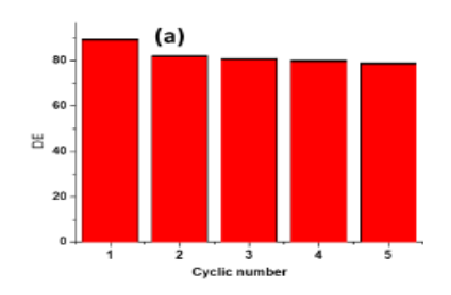


Indian Journal of Science and Technology
DOI: 10.17485/IJST/v15i41.1368
Year: 2022, Volume: 15, Issue: 41, Pages: 2143-2150
Original Article
Lam Hoang1, Anh-Tuan Vu1*
1School of Chemical Engineering, Hanoi University of Science and Technology, Hanoi, Viet Nam
*Corresponding Author
Email: [email protected]
Received Date:30 June 2022, Accepted Date:23 September 2022, Published Date:03 November 2022
Objective: This study aims to decompose antibiotic of tetracycline hydrochloride (TCH) in aqueous medium by photocatalysis under the visible light irradiation. Method: Photocatalyst e -Zn(OH)2 was synthesized by facile precipitation method from an aqueous containing zinc nitrate, using trisodium citrate dihydrate. The characterization of as-prepared material was confirmed by XRD, SEM, FI-IR, and UV-Vis-DR. The catalytic performance of catalyst was evaluated by batch reaction. Finding: e -Zn(OH)2 has an orthorhombic structure with a length prism of 5-7 mm and triangle angles of 56.92, 69.46, and 66.71o e -Zn(OH)2 has been shown to efficiently degrade tetracycline hydrochloride. The degradation efficiency (DE) and reaction rate at the TCH concentration of 5 mg/L were the highest, exhibiting 89.51% and 0.120 min-1, respectively. The alkaline medium was an appropriate condition for degradation of TCH on catalyst. Application/Improvement: e -Zn(OH)2 was synthesized by the facile precipitation method, it has relatively strong photocatalytic ability for applying in treatment of medical wastewater. Novelty: Novel triangular prism e -Zn(OH)2 was prepared for photocatalysis. The relationship between structure and catalytic efficiency was investigated in detail. In addition, the photocatalytic mechanism of TCH on e -Zn(OH)2 has been proposed.
Keywords: Photocatalyst; Zn(OH) 2; Tetracycline hydrochloride; Degradation; Kinetic
© 2022 Hoang & Vu. This is an open-access article distributed under the terms of the Creative Commons Attribution License, which permits unrestricted use, distribution, and reproduction in any medium, provided the original author and source are credited. Published By Indian Society for Education and Environment (iSee)
Subscribe now for latest articles and news.